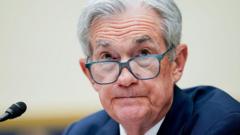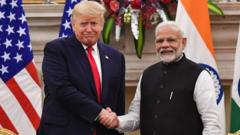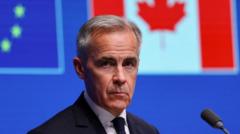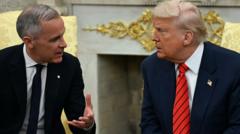India, the world's fifth-largest and fastest-growing major economy, is navigating a unique trade landscape that has emphasized self-reliance over global competitiveness. In an era marked by high tariffs, trade barriers, and a growing tendency towards protectionism globally, the country is slowly recognizing unexpected benefits from its trade-shy policies. With high domestic market reliance and reduced export exposure, analysts argue that India has the potential to weather economic storms more effectively than its export-heavy peers.
India's Trade Detachment: A Shield in Turbulent Times
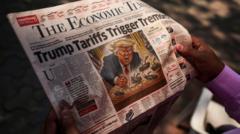
India's Trade Detachment: A Shield in Turbulent Times
As global protectionism rises, India's cautious trade stance may provide unexpected advantages.
India's past experiences reveal a complex relationship with trade policy; historical protectionism and inward-focused strategies have often stifled growth potential. While previous decades saw a surge in exports post-liberalization, recent trends indicate a regression towards anti-dumping measures and heightened tariffs under government initiatives like "Make in India." This raises the stakes for the economy, as India must reconsider its approach to trade and seek out new partnerships, especially with countries in the European Union.
Further complicating matters, the potential for upcoming U.S. tariff implementations could pose challenges, risking a significant drop in India's export revenues to the United States. As the country contemplates its next moves, the call for strategic reforms and openness to global trade becomes clearer than ever, alongside an urgent need to bolster competitive sectors like textiles and garments.
In this high-stakes scenario, a balancing act emerges: can India harness its economic resilience to transition toward a more open trading regime while addressing historical constraints hampering its growth? The answer may determine the nation's position in an unpredictable global trade environment.
With diverse partnerships and a commitment to reform, India’s trade future could redefine itself, propelling the nation toward greater economic opportunity amidst global changes.
Further complicating matters, the potential for upcoming U.S. tariff implementations could pose challenges, risking a significant drop in India's export revenues to the United States. As the country contemplates its next moves, the call for strategic reforms and openness to global trade becomes clearer than ever, alongside an urgent need to bolster competitive sectors like textiles and garments.
In this high-stakes scenario, a balancing act emerges: can India harness its economic resilience to transition toward a more open trading regime while addressing historical constraints hampering its growth? The answer may determine the nation's position in an unpredictable global trade environment.
With diverse partnerships and a commitment to reform, India’s trade future could redefine itself, propelling the nation toward greater economic opportunity amidst global changes.




